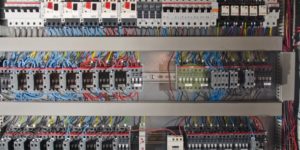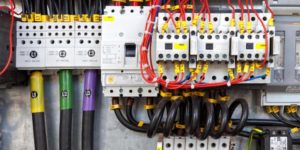Any change can often be overwhelming and frightening, especially where there is a perceived loss of control from human interaction to automation, however there are a multitude of benefits when you upgrade to automation, here are a few:
Automation Provides Lower operating costs
Robots can perform the work of three to five people, depending on the task. In addition to savings on the cost of labour, energy savings can also be significant due to lower heating requirements in automated operations. Robots streamline processes and increase part accuracy, which means minimal material waste for your operation.
Automation Improves worker safety
Automated cells remove workers from dangerous tasks. Your employees will thank you for safeguarding them against the hazards of a factory environment.
Automation Reduces factory lead times
Automation can keep your process in-house, improve process control and significantly reduce lead times compared to outsourcing or going overseas.
You Receive a Faster ROI with Automation
Automation solutions are based on your unique needs and goals and pay for themselves quickly due to lower operating costs, reduced lead times, increased output and more.
Ability to be more competitive
Automated cells allow you to decrease cycle times and cost-per-piece while improving quality. This allows you to better compete on a global scale. Additionally, the flexibility of robots enables you to retool a cell to exceed the capabilities of your competition.
Increased production output using Automation
A robot has the ability to work at a constant speed, unattended, 24/7. That means you’ve got the potential to produce more. New products can be more quickly introduced into the production process and new product programming can be done offline with no disruption to existing processes.
Consistent and improved part production and quality
Automated cells typically perform the manufacturing process with less variability than human workers. This results in greater control and consistency of product quality.
Smaller environmental footprint
By streamlining equipment and processes, reducing scrap and using less space, automation uses less energy. Reducing your environmental footprint can save real money.
Better planning
Consistent production by robots allows a shop to reliably predict timing and costs. That predictability permits a tighter margin on most any project.
Reduce need for outsourcing
Automated cells have large amounts of potential capacity concentrated in one compact system. This allows shops to produce parts in-house that have previously been outsourced.
Optimal utilisation of floor space
Robots are designed on compact bases to fit in confined spaces. In addition to being mounted on the floor, robots can be mounted on walls, ceilings, rail tracks and shelves. They can perform tasks in confined spaces, saving you valuable floor space.
Easy integration
Productivity will work with you to provide a complete system – hardware, software and controls included. Your cell will be proven out at Productivity and shipped production-ready – allowing you to start making parts as soon as it’s installed in your shop.
Maximize labor
Over the next three decades, statistics show that more than 76 million baby boomers will retire and only 46 million new workers will be available to replace them. During this time, your demand for labour will continue, making automation a real and viable solution.
Increase productivity and efficiency
- 24/7 production, JIT manufacturing-friendly
- More uptime with historic efficiency figures above 90 percent
- Secondary operations capability — gauging, washing, deburring, etc.
- Real-time factory communications with automated cell and machines
- Quick changeover for multiple parts, tooling and programs
- Flexible multi-operations capability — Op 10, Op 20, etc.
Increase system versatility
- System flexibility, easily retooled and repositioned for new production programs
- Robots are flexible and can easily be redeployed in new applications
- Robots have the ability to easily switch between a wide range of products without having to completely rebuild production lines
- Quick changeover with auto grippers and vision allows for different part sizes and shapes to be part of the same run
- Mixed-flow production approach allows for flexibility in adjusting to demand fluctuations
- Robots are able to instantaneously “learn” new processes
- Reduced changeover time




